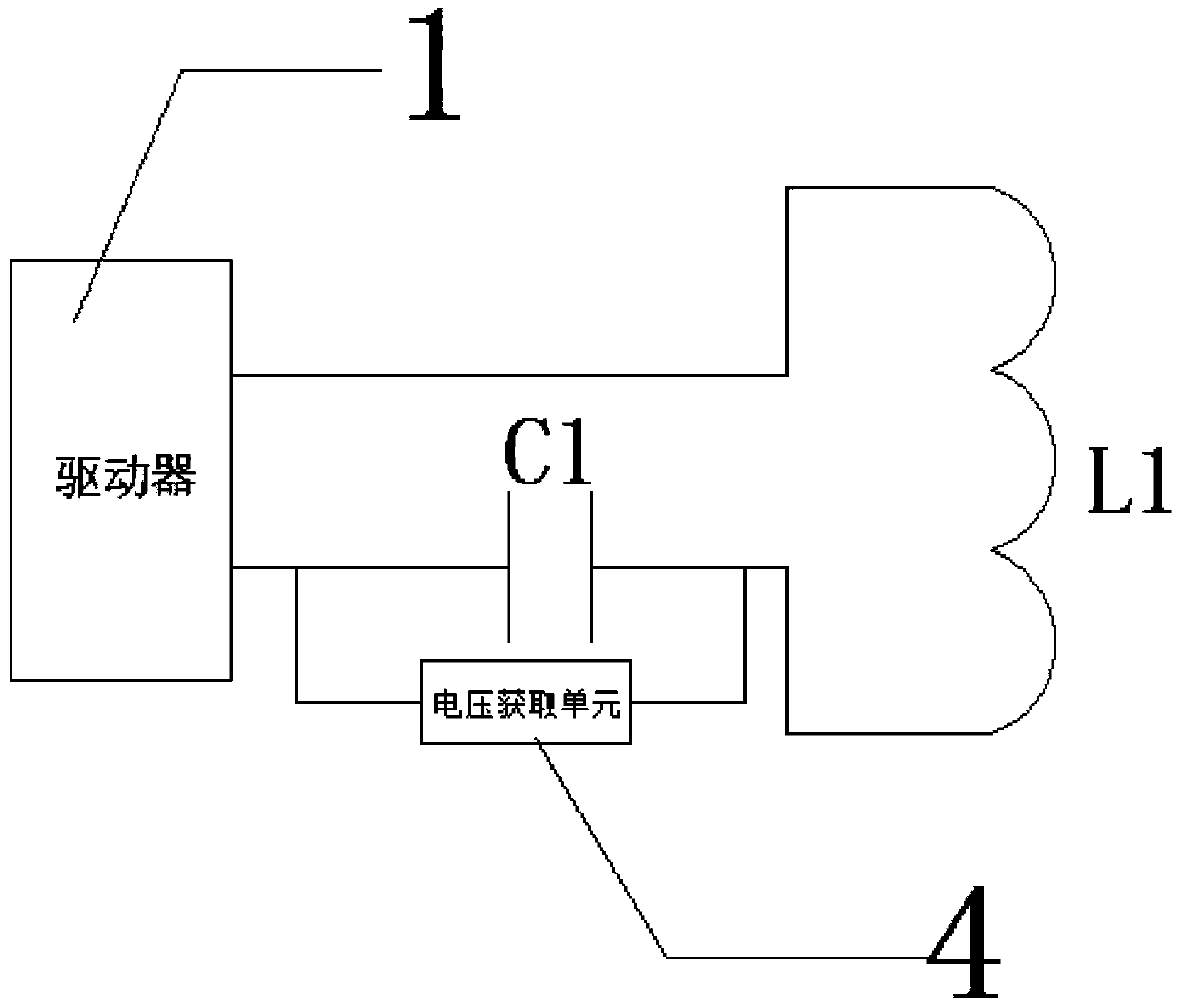Wireless charger capable of prompting for position adjustment, prompting method and rechargeable implantable medical device
A wireless charger and position-adjusting technology, applied in the field of wireless chargers, prompting methods and rechargeable implantable medical devices, can solve the problems of inability to charge implantable devices, incorrect placement of wireless chargers, etc. The effect of charging quality and efficiency
- Summary
- Abstract
- Description
- Claims
- Application Information
AI Technical Summary
Problems solved by technology
Method used
Image
Examples
Embodiment 1
[0046] figure 1 It is a schematic structural diagram of a wireless charger that can prompt for position adjustment provided by Embodiment 1 of the present invention. The wireless charger generates electromagnetic waves through the transmitting coil, and the receiving coil converts the electromagnetic waves into electrical energy through electromagnetic induction to charge the implanted device. Such as figure 1 As shown, the wireless charger includes: a driver 1, used to generate a high-frequency waveform signal of 30KHz to 80KHz, and the above functions can be realized by a corresponding chip or a high-frequency oscillator circuit and a power amplifier circuit; a resonant circuit 2, used for Generate and radiate electromagnetic waves according to high-frequency waveform signals; the prompt module 3 is used to prompt the user to move the wireless charger;
[0047] In this embodiment, the driver chip U1 is used as the driver 1 of the wireless charger, which is used to output h...
Embodiment 2
[0056] This embodiment is optimized based on the above embodiments, wherein the voltage obtaining unit 4 obtains the voltage of the inductance coil L2 in the resonant circuit. Figure 5 It is a schematic diagram of the connection of the voltage acquisition unit in the in vitro wireless charger that can prompt to adjust the position provided by the second embodiment of the present invention. Figure 5 It can be seen that the voltage acquisition unit 4 is used to transmit the voltage across the coil L1. The voltage acquiring unit 4 is electrically connected to the transmitting coil L1 in the resonant circuit, and can acquire the voltage of the transmitting coil L1. And it can be determined whether the location of the wireless charger is suitable for charging the implanted device according to the voltage of the transmitting coil L1.
[0057] Since the prompting device 6 generates a prompt according to the input low level, when the voltage obtained by the sampling circuit 7 is gr...
Embodiment 3
[0059] Figure 7 It is a schematic flow chart of the prompt method for adjusting the position of the wireless charger according to Embodiment 3 of the present invention. The prompt method for adjusting the position of the cord charger can be based on the wireless charger that can prompt for position adjustment provided in the above-mentioned embodiment.
[0060] see Figure 7 , the prompt method for adjusting the position of the wireless charger includes:
[0061] Step 310, the driver generates a high frequency waveform pattern.
[0062] Step 320, the resonant circuit generates and radiates electromagnetic waves according to the high-frequency waveform signal generated by the driver.
[0063] In step 330, the voltage of the resonant circuit is obtained by the voltage obtaining unit.
[0064] Step 340, comparing the voltage of the resonant circuit obtained by the voltage obtaining unit with the reference voltage, and outputting a prompt through the prompting device when abno...
PUM
 Login to View More
Login to View More Abstract
Description
Claims
Application Information
 Login to View More
Login to View More - R&D
- Intellectual Property
- Life Sciences
- Materials
- Tech Scout
- Unparalleled Data Quality
- Higher Quality Content
- 60% Fewer Hallucinations
Browse by: Latest US Patents, China's latest patents, Technical Efficacy Thesaurus, Application Domain, Technology Topic, Popular Technical Reports.
© 2025 PatSnap. All rights reserved.Legal|Privacy policy|Modern Slavery Act Transparency Statement|Sitemap|About US| Contact US: help@patsnap.com



